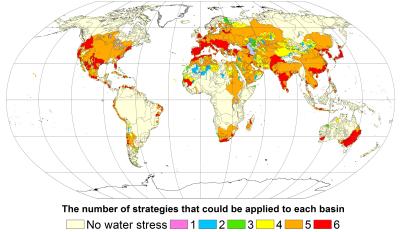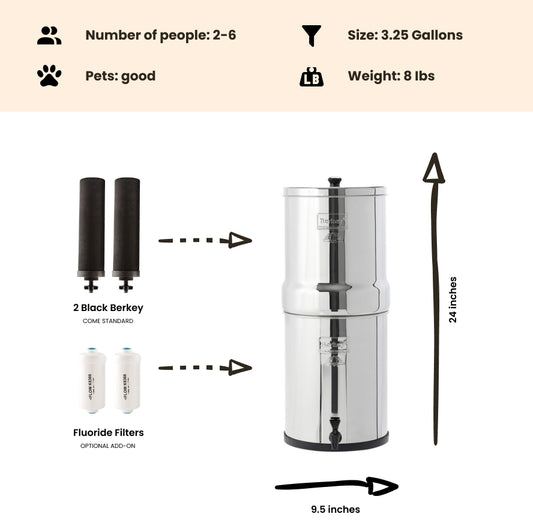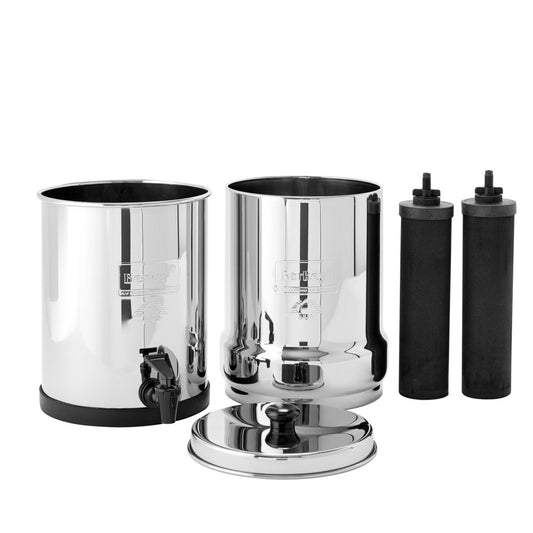
Six Strategies to Reduce Water Scarcity by 2050
By Dan DeBaunShare
Water scarcity is a global challenge that poses a problem for both developing and developed countries alike. In the US, federal officials recently warned communities living in Nevada and Arizona that they may face cuts in water supplies delivered by the Colorado River in 2016, while Californian legislators have proposed an emergency water plan estimated at around 7.5 billion US dollars.
These measures have become necessary due to increased pressure on water resources due to residential and industrial water usage habits, and irrigation methods, combined with water shortages as a result of climate change.
However, even though the world's current water woes seem to be a difficult problem to tackle, scientists from McGill and Utrecht University feel that we can still reverse the current state of affairs and substantially reduce water scarcity by 2050.
In a paper published last year in Nature Geoscience, the researchers propose six key strategies that can be used in different combinations in different areas of the world to reduce water scarcity and relieve water stress. Water stress occurs when more than 40% of available freshwater is in effect unavailable due to it being utilized elsewhere -- a situation that around a third of the world's population currently find themselves in, and may increase to affect as much as half the world's population by 2100 if no action is taken to reduce water usage.
The researchers categorize the six key strategies into two paths: hard path measures, which involve constructing infrastructure such as reservoirs and desalination plants to improve water storage and/or supply; and soft path measures, where the focus is more on reducing the demand for water rather than increasing the water supply. According to the researchers, the soft path measures are generally a more realistic option to reduce water stress, however some of the proposed measures may be more difficult to implement due to cultural, social and economic factors.
The proposed strategies to reduce water scarcity include:
"Soft measures"
1. Improving agricultural water usage in water stressed basins where crops are commonly irrigated by introducing new cultivars together with improved soil nutrient application could help reduce the fraction of people affected by water stress by 2% by 2050. However, concerns over the impacts of eutrophication and genetic modification need to be addressed.
2. Improving irrigation efficiency, for example by using drips or sprinklers instead of flood irrigation, in irrigated agricultural basins could help improve irrigation efficiency, however capital outlay is a significant factor, and soil salinization could result.
3. Improving both domestic and industrial water consumption in areas that are water stressed by taking steps to reduce leaks in pipes and fittings that supply water, and enhancing water-recycling plants.
4. Stemming population growth is a key strategy to relieve reduce water scarcity in water-stressed areas, but in order to be effective the population would need to remain below 8.5 billion in 2050. This can be achieved through tax incentives and family planning assistance, but given current population trends this may be difficult to achieve.
"Hard measures"
5. Increasing water storage by building more reservoirs or enlarging existing ones could improve storage capacity to assist water-stressed basins. However, this would require substantial capital investment, and could also have a negative impact on the environment and local communities.
6. Utilizing seawater by building desalination plants could add another source of water in coastal areas; or existing desalination plants could be expanded to increase their capacity. Again, this would involve a significant capital outlay, together with substantial energy costs, and would produce wastewater that would require safe disposal.
"There is no single silver bullet to deal with the problem around the world," says Prof. Tom Gleeson, of McGill's Department of Civil Engineering and one of the authors of the paper. "But, by looking at the problem on a global scale, we have calculated that if four of these strategies are applied at the same time we could actually stabilize the number of people in the world who are facing water stress rather than continue to allow their numbers to grow, which is what will happen if we continue with business as usual.""Significant reductions in water-stressed populations are possible by 2050," adds co-author Dr. Yoshihide Wada from the Department of Physical Geography at Utrecht University, "but a strong commitment and strategic efforts are required to make this happen."
Journal Reference: Yoshihide Wada, Tom Gleeson, Laurent Esnault. Wedge approach to water stress. Nature Geoscience, 2014; 7 (9): 615 DOI: 10.1038/ngeo2241
-
Regular price $234.00 USDRegular priceUnit price / per
-
Regular price $327.00 USDRegular priceUnit price / per
-
Regular price From $367.00 USDRegular priceUnit price / per
-
Regular price From $408.00 USDRegular priceUnit price / per
-
Regular price From $451.00 USDRegular priceUnit price / per
-
Regular price From $478.00 USDRegular priceUnit price / per
-
Regular price $332.50 USDRegular priceUnit price / per
$350.00 USDSale price $332.50 USDSale

Dan DeBaun
Dan DeBaun is the owner and operator of Big Berkey Water Filters. Prior to Berkey, Dan was an asset manager for a major telecommunications company. He graduated from Rutgers with an undergraduate degree in industrial engineering, followed by an MBA in finance from Rutgers as well. Dan enjoys biohacking, exercising, meditation, beach life, and spending time with family and friends.
~ The Owner of Big Berkey Water Filters

















that's really very helpful